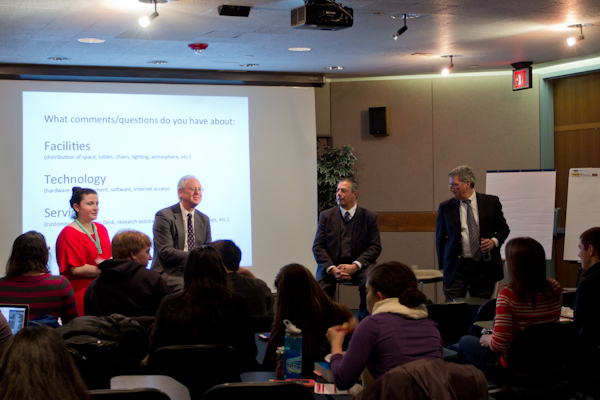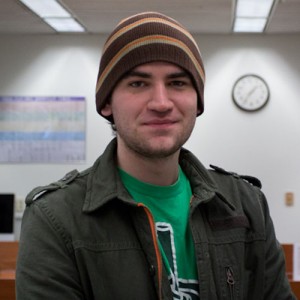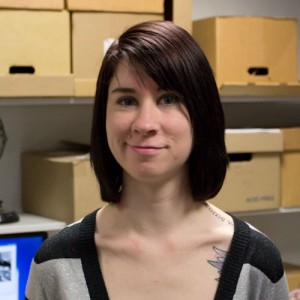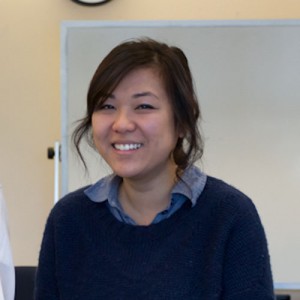Codebreakers: Makers of Modern Genetics

Image courtesy the Wellcome Library

Image courtesy the Wellcome Library

 Ryan Stewart – Digital Media Commons
Hi, my name is Ryan Stewart and I am currently a third year student in Northeastern’s Digital Art and Game Design program. From a very early age, I have been fascinated with video games, and have always known I would end up working with them – doing anything related to them – for the rest of my life. With this fascination, I’ve dedicated the past three years to honing my skills as an artist through the learning of animation tools and programs. I hope to use my experience at the university to build my portfolio and break my way into the professional game industry. In my spare time, I’m working on a series of animations to help build a brand for my name and work. I also am looking to get started in a career of voice over work on the side. The library and new Digital Media Commons have been instrumental in a large number of my projects, and I’m excited to use their resources for many more to come.
Ryan Stewart – Digital Media Commons
Hi, my name is Ryan Stewart and I am currently a third year student in Northeastern’s Digital Art and Game Design program. From a very early age, I have been fascinated with video games, and have always known I would end up working with them – doing anything related to them – for the rest of my life. With this fascination, I’ve dedicated the past three years to honing my skills as an artist through the learning of animation tools and programs. I hope to use my experience at the university to build my portfolio and break my way into the professional game industry. In my spare time, I’m working on a series of animations to help build a brand for my name and work. I also am looking to get started in a career of voice over work on the side. The library and new Digital Media Commons have been instrumental in a large number of my projects, and I’m excited to use their resources for many more to come.
 Katherine Doerner – Archives & Special Collections
My name is Katherine Doerner, and I am a middler originally from Memphis, Tennessee. I am majoring in Cultural Anthropology with two minors in International Affairs and English. I enjoy reading, biking, sewing, writing music, and show photography.
Katherine Doerner – Archives & Special Collections
My name is Katherine Doerner, and I am a middler originally from Memphis, Tennessee. I am majoring in Cultural Anthropology with two minors in International Affairs and English. I enjoy reading, biking, sewing, writing music, and show photography.
 Peyton Gee – Graphic Design
I’m Peyton Gee, a 3rd year Digital Art student specializing in animation with a minor in graphic design. Predictably, my hobbies include drawing, reading comics, watching cartoons, playing video games, and practicing Kung Fu. Here at the library, I’m the graphic design co-op and will be the one taking care of the majority of the design work here. Flyers, posters, notices, and anything else that needs to be visually designed will be my work, so you know who to blame if you can’t understand the maps or the posters don’t make any sense!
Peyton Gee – Graphic Design
I’m Peyton Gee, a 3rd year Digital Art student specializing in animation with a minor in graphic design. Predictably, my hobbies include drawing, reading comics, watching cartoons, playing video games, and practicing Kung Fu. Here at the library, I’m the graphic design co-op and will be the one taking care of the majority of the design work here. Flyers, posters, notices, and anything else that needs to be visually designed will be my work, so you know who to blame if you can’t understand the maps or the posters don’t make any sense!
 Julie Ryu – Marketing & Events
My name is Julie and I’m the new Marketing and Events co-op for Snell. I’ll be focusing on organizing library events for the spring, along with working with general marketing materials. I’m a fourth year Communications student, minoring in English Literature. I’m currently working my way through the (addicting) A Song of Ice and Fire series and I enjoy media studies, especially television, and spend a lot of my time watching shows.
Here’s to a great semester!
Julie Ryu – Marketing & Events
My name is Julie and I’m the new Marketing and Events co-op for Snell. I’ll be focusing on organizing library events for the spring, along with working with general marketing materials. I’m a fourth year Communications student, minoring in English Literature. I’m currently working my way through the (addicting) A Song of Ice and Fire series and I enjoy media studies, especially television, and spend a lot of my time watching shows.
Here’s to a great semester!